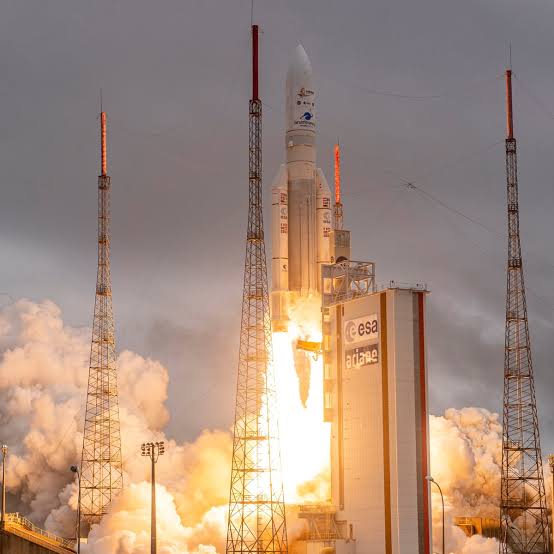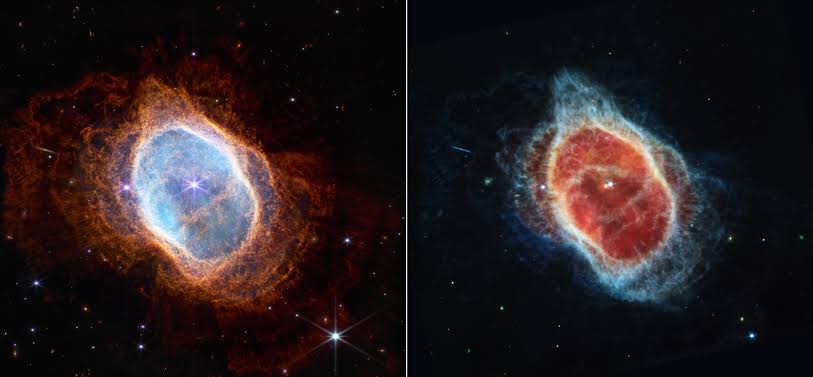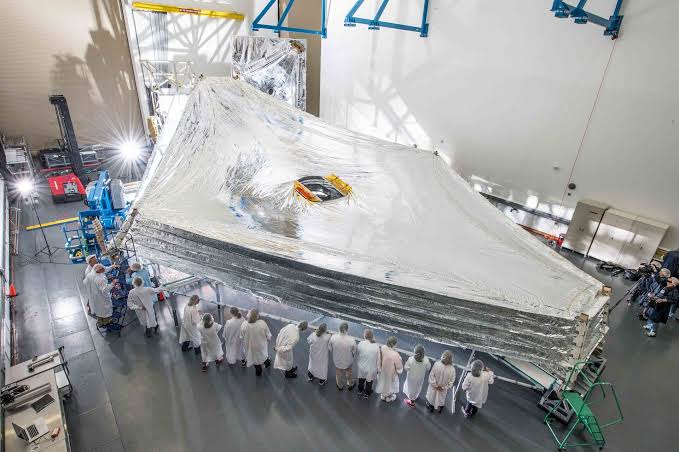The European Space Agency (ESA), the Canadian Space Agency (CSA), and NASA are partners in the operation of the James Webb Space Telescope, sometimes referred to as “Webb” (like “Hubble”) and receiving the majority of the funding.
The telescope is named after James E. Webb, a pioneering NASA administrator who oversaw the development of the Apollo programme in the 1960s, according to NASA.
The “Webb Space Telescope,” formerly known as the “Next Generation Space Telescope,” was given its current name for the first time in 2002, almost 20 years ago.
Webb’s Initial Portayal

Credit: NASA
The mission of the James Webb Space Telescope (JWST), which launched on December 25, 2021, at 7:20 a.m. ET (12:20 p.m. GMT) from the Guiana Space Center (also known as Europe’s Spaceport) in French Guiana, is to observe some of the faintest, oldest objects in the universe from a location nearly 1 million miles (1.5 million kilometres) from Earth.
Nearly 20 years ago, in 2002, Webb’s name was originally used to allude to what was then known as the “Next Generation Space Telescope.”

Budget of James Webb Telescope
According to The Atlantic, Webb was initially intended to cost $500 million and deploy in 2007. Given the spacecraft’s incredibly complicated and cutting-edge design, these forecasts, however, proved to be unduly optimistic.
The U.S. Government Accountability Office estimates that the telescope’s construction cost was close to $10 billion, roughly tripling the 2009 estimate.
However, the scientists working on the research are confident that the outcomes would more than justify the time and money spent on it.
NASA’s Intent
NASA wants to make it clear that Webb is more than just a larger and more potent telescope than Hubble.
According to earlier reports from Live Science, standard optical telescopes typically span a wavelength range of from 380 to 740 nanometers (nm), which is the same region of the spectrum that our eyes see in.
All of this was covered by Hubble, as well as a small portion of the ultraviolet and infrared at different wavelengths.However, the JWST’s primary function, as stated on the NASA JWST website, will be as an infrared telescope, optimised for wavelengths between 600 and 28,000 nm.
Where Does JWST ‘Reside’ In The Outer Space ?
The fact that Webb’s design has a “cold side” and a “hot side” is a crucial aspect. The spacecraft’s hot side houses the solar panels and an antenna for two-way communication with Earth, while the cold side is used for observation.
However, for this arrangement to be effective, the sun and earth must constantly appear to the spaceship to be facing the same way.
This would not be the case if Webb were just put into an Earth orbit like Hubble, nor would it be true if the spaceship orbited the Sun at a slightly different distance from the Earth’s orbit.
Related: Check Out The First Five Incredible Images Captured By The James Webb Telescope

How Does The James Space Webb Telescope Operate ?
The JWST appears considerably different from Hubble from the outside. The latter is housed in a cylindrical tube that protects the optics from stray light, just like a conventional telescope. Hubble may be exposed to a lot of light, depending on where it is in its orbit: bright sunlight in one direction, reflections from the Earth’s surface in another, and occasionally even the moon.
Webb, however, is luckier. All these light sources appear to be pointing in roughly the same direction when viewed from the L2 point, therefore the telescope only requires a single sizable sunshield.
Then, primary and secondary mirrors—the raw optics—are placed on top of this. At first view, the outcome appears to be closer to a radio telescope than an optical one.
However, functionally speaking, Hubble and Webb are both built using the same concepts. Both telescopes are centred on a huge primary mirror, whose critical function is to collect as much light as possible from objects that might be on the very edge of the observable cosmos.
Related: Explained-Why Are The Webb Mirrors Coated With Gold?

JWST’s Sunshield
The JWST will be positioned in continual brilliant sunlight at the L2 location. The spacecraft bus’s equipment will benefit from this, while the science module’s optical instruments and other components will suffer.
These need to be kept as cold as possible in order to operate well because they observe via infrared. As a result, a sizable, kite-shaped, five-layer sunshield around the size of a tennis court will stand between the spacecraft’s two sides.
The JWST will be exposed to constant intense sunlight because of its L2 point location. This is advantageous for the spacecraft bus’s hardware but unfavourable for the scientific module’s optical sensors. These need to be kept as cool as possible to operate properly because they use infrared to observe.
A massive, kite-shaped, five-layer sunshield around the size of a tennis court will thus be used to divide the spacecraft’s two parts. The frigid side will be as chilly as minus 394 F (minus 237 C), according to NASA’s JWST website, while the sunlit side may reach temperatures of 212 F (100 C).
Related: What Is The Purpose Of Using Sunshield On James Webb Space Telescope?

Conclusion
The National Academy of Science has identified JWST as the top investment priority for NASA space astronomy in this decade. It continues to prosper under a philosophy that calls for precise, centralised management and robust systems engineering. It is a model of global cooperation and collaboration.
